Shokz OpenDots One vs. Shokz OpenFit 2+: which open-ear buds are right for you?
Do you like your open headphones clip-on or with earhooks?
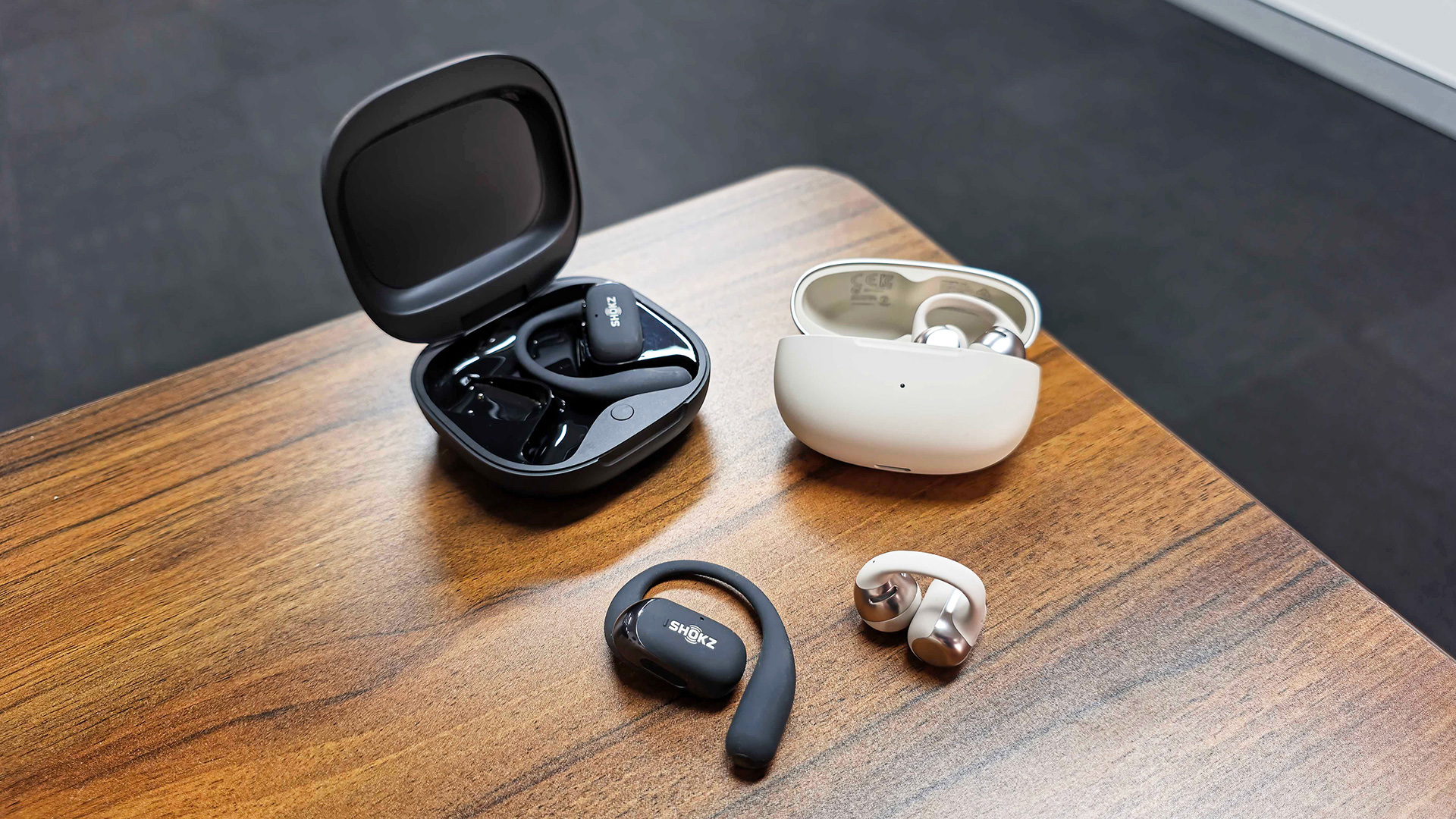
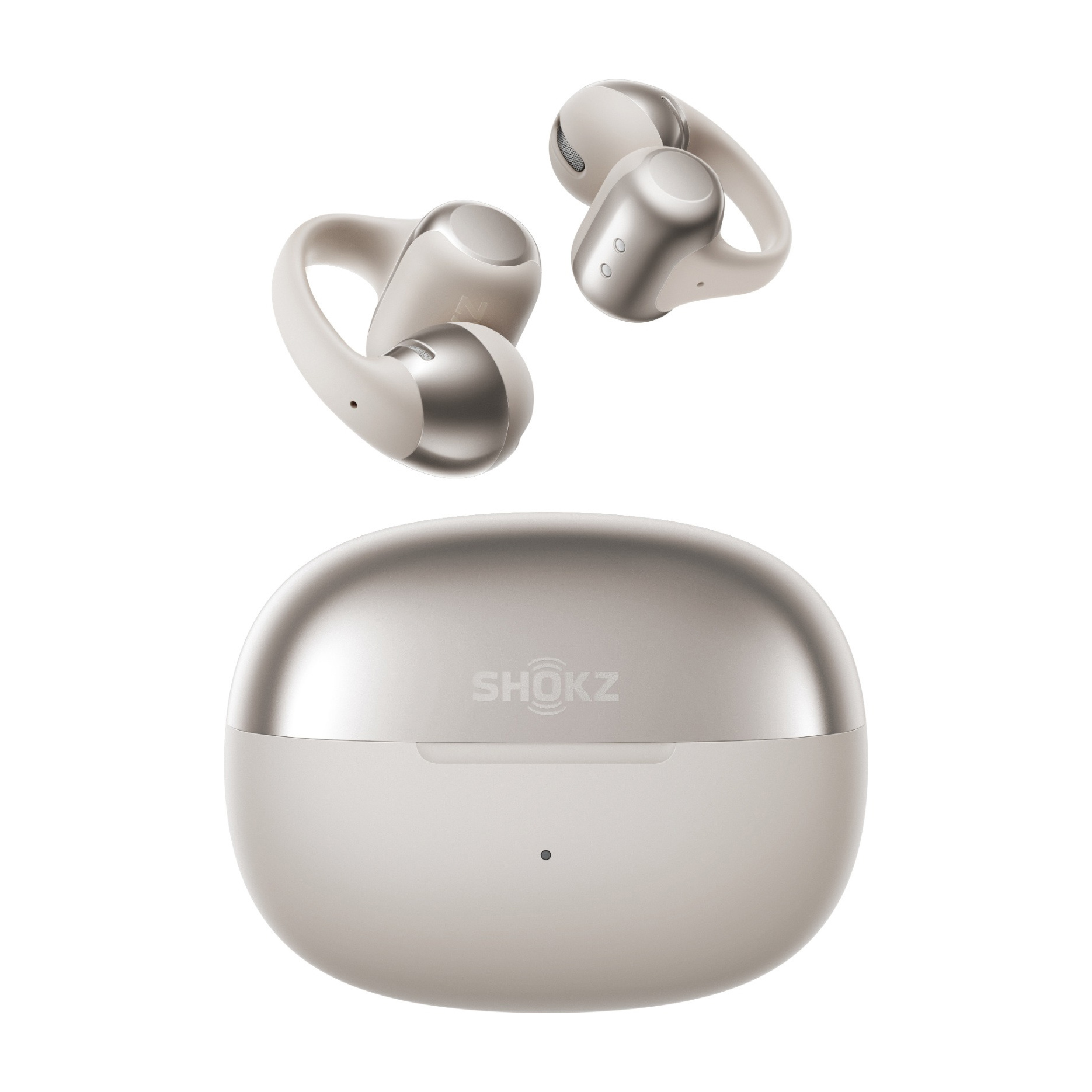
Shokz's first attempt at clip-on earphones is impressive, offering a snug and secure fit that will suit most ears, along with support for Dolby Audio. Its wireless charging case is far more pocketable than the OpenFit 2+, however, it offers slightly less battery life and its sound quality isn't as good.
Pros
- Secure clip-on design
- Dolby Audio support
- Wireless charging case
Cons
- Could have more bass
- Sometimes too quiet
- Sound leakage
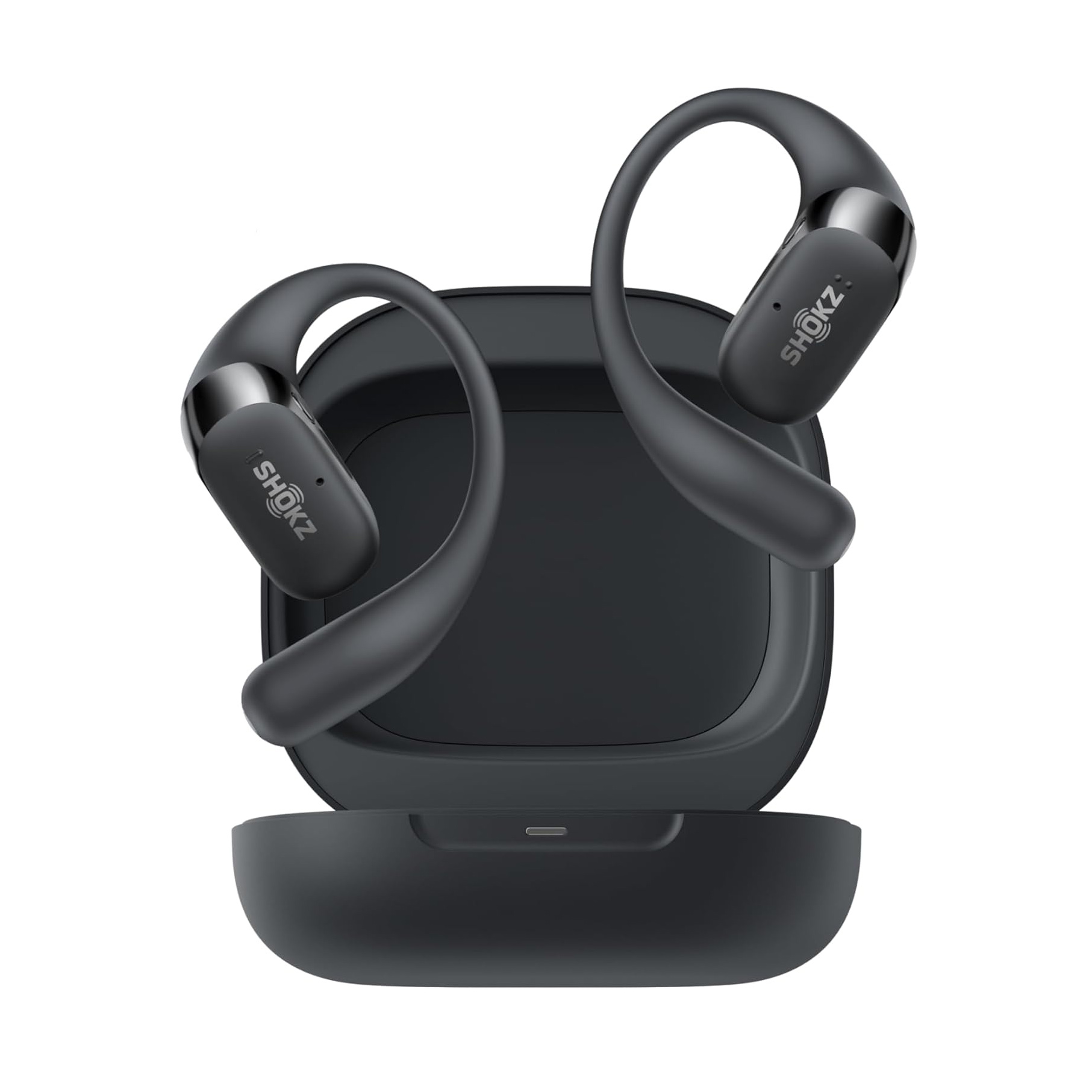
Even though they're priced identically to the OpenDots One, the OpenFit 2+ are more advanced in a few key areas. They offer longer battery life, improved materials and slightly better water resistance, along with physical buttons. That said, they're quite small and won't suit all ears.
Pros
- Physical button controls
- Wireless charging case
- Ideal design for running
Cons
- Not suited to larger ears
- Sound leakage
- Pricier than predecessor
Shokz, a Chinese company that's been a big player in open-ear headphones, is shaking things up with its two newest products, the OpenDots One and the OpenFit 2+ — each looking to deliver high-quality open-ear audio in their own unique way.
The OpenDots One is arguably the most novel of the two, as it's the company's first attempt at a clip-on design, similar to the Bose Ultra Open. That means they wrap around the lower part of your ear with a flexible band, while the speaker itself sits in front of your ear canal.
Meanwhile, the OpenFit 2+ follows on from the earhook design of the popular OpenFit, and offers a few quality of life upgrades over the standard OpenFit 2, making them a top candidate for the best running headphones of 2025.
As a relative newbie to open-ear headphones, comparing the OpenDots One and OpenFit 2+ has given me some great insight into what Shokz's 'DirectPitch' tech can do across different earbud designs.
Now I've tested both sets of open-ear headphones over the last two weeks, I know which design suits me more, even if the other option offers better sound quality overall. Read on to find out how each option fares in this Shokz OpenDots One vs. Shokz OpenFit 2+ comparison.
Shokz OpenDots One vs Shokz OpenFit 2+: price and availability
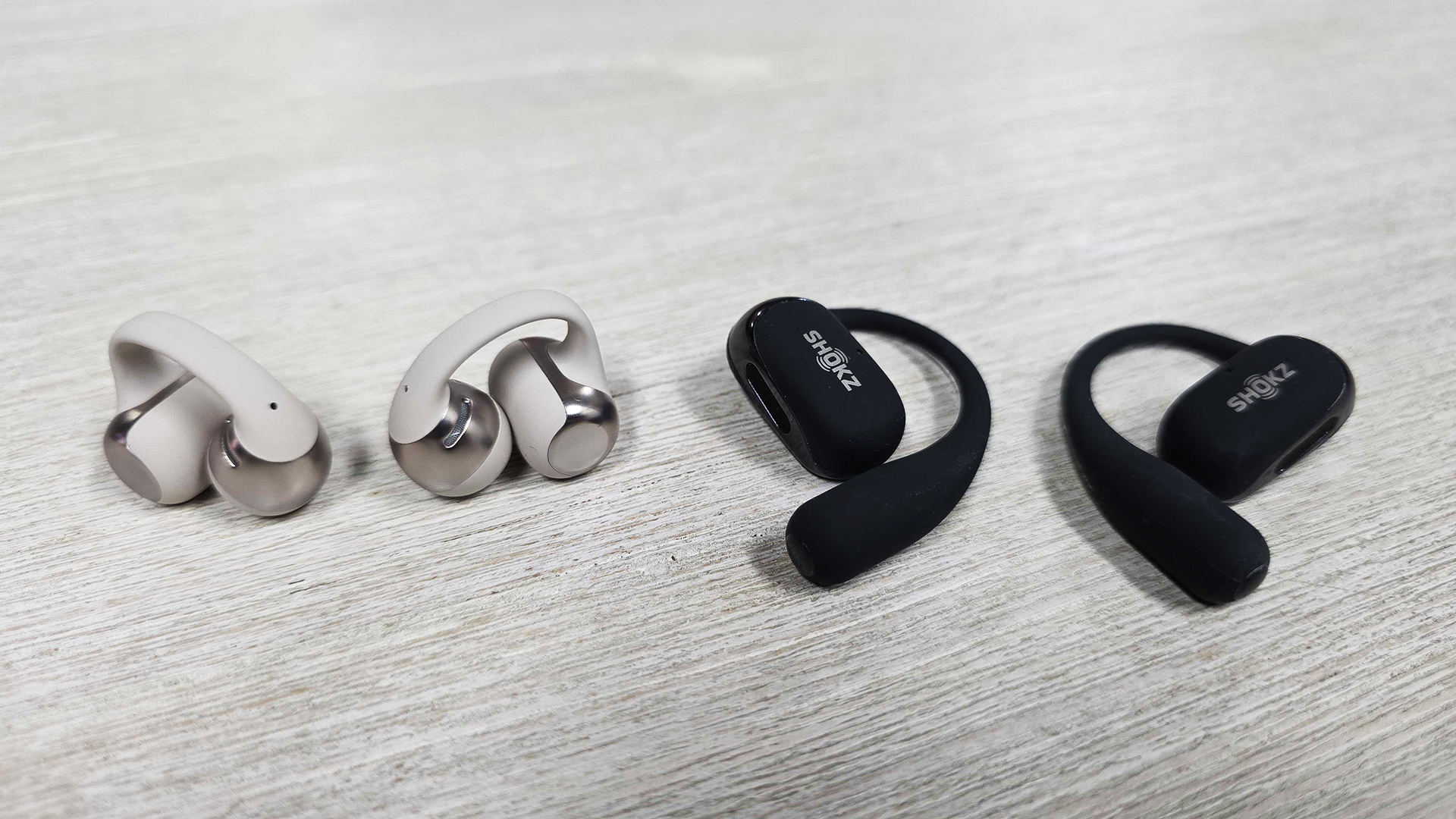
Despite their differences in size and design, the Shokz OpenDots One and Shokz OpenFit 2+ are priced identically in the US and Australia, though the former has yet to be confirmed for release in the UK.
The Shokz OpenDots One is priced at $199.95 / AU$339 and was released on April 29 in the US and June 3 in Australia. Meanwhile, the Shokz OpenFit 2+ is priced at $199.95 / £179 / $339 and was released in the UK and Europe on June 5, and in Australia on July 3. A US release date for the Shokz OpenFit 2+ has not yet been confirmed.
Get instant access to breaking news, the hottest reviews, great deals and helpful tips.
Both the Shokz OpenDots One and the OpenFit 2+ come are offered in grey and black color options.
Shokz OpenDots One vs Shokz OpenFit 2+: specs
| Row 0 - Cell 0 | Shokz OpenDots One | Shokz OpenFit 2+ |
Price | $199.95 / AU$339 | $199.95 / £179 / $339 |
Colors | Black, grey | Black, grey |
Weight | 6.5g (per bud); 39g (charging case) | 9.4g (per bud); 56g (charging case) |
Water Resistance | IP54 | IP55 |
Battery life | 10 hours (buds), 40 hours (case) | 11 hours (buds), 48 hours (case) |
Connectivity | Bluetooth 5.4 | Bluetooth 5.4 |
Dolby Audio | Yes | Yes |
Wireless charging | Yes | Yes |
Shokz OpenDots One vs Shokz OpenFit 2+: sound quality

Going into this Shokz OpenDots One and OpenFit 2+ comparison, I had limited experience with open-ear headphones. Now that I've spent some time testing these devices, I believe I have a good idea of what this technology is capable of in terms of sound quality.
Both the OpenDots One and OpenFit 2+ use Shokz's patented DirectPitch technology, which essentially beams sound right into your ear canal from just outside it using smartly positioned vents. Additionally, phase cancellation is used to help keep your tunes private.
The OpenFit 2+ offers the same dual driver configuration as the standard OpenFit 2, with one driver dedicated to bass, and the other handling mids and highs. Where the OpenFit 2+ differs, however, is in the inclusion of Dolby Audio support, resulting in more impactful and perceptibly deeper sound.
In saying that, I personally couldn't achieve a satisfying listening experience with the OpenFit 2+ when worn as intended. The earhooks proved too small for my (apparently large) ears, preventing them from properly reaching the opening of my ear canals. This resulted in them sounding quiet, tinny and distant.
However, when held up against my ears in approximately the correct area, there was a dramatic improvement in sound quality — the OpenFit 2+ gained a significant boost in bass and brightness, along with an expanded soundstage.
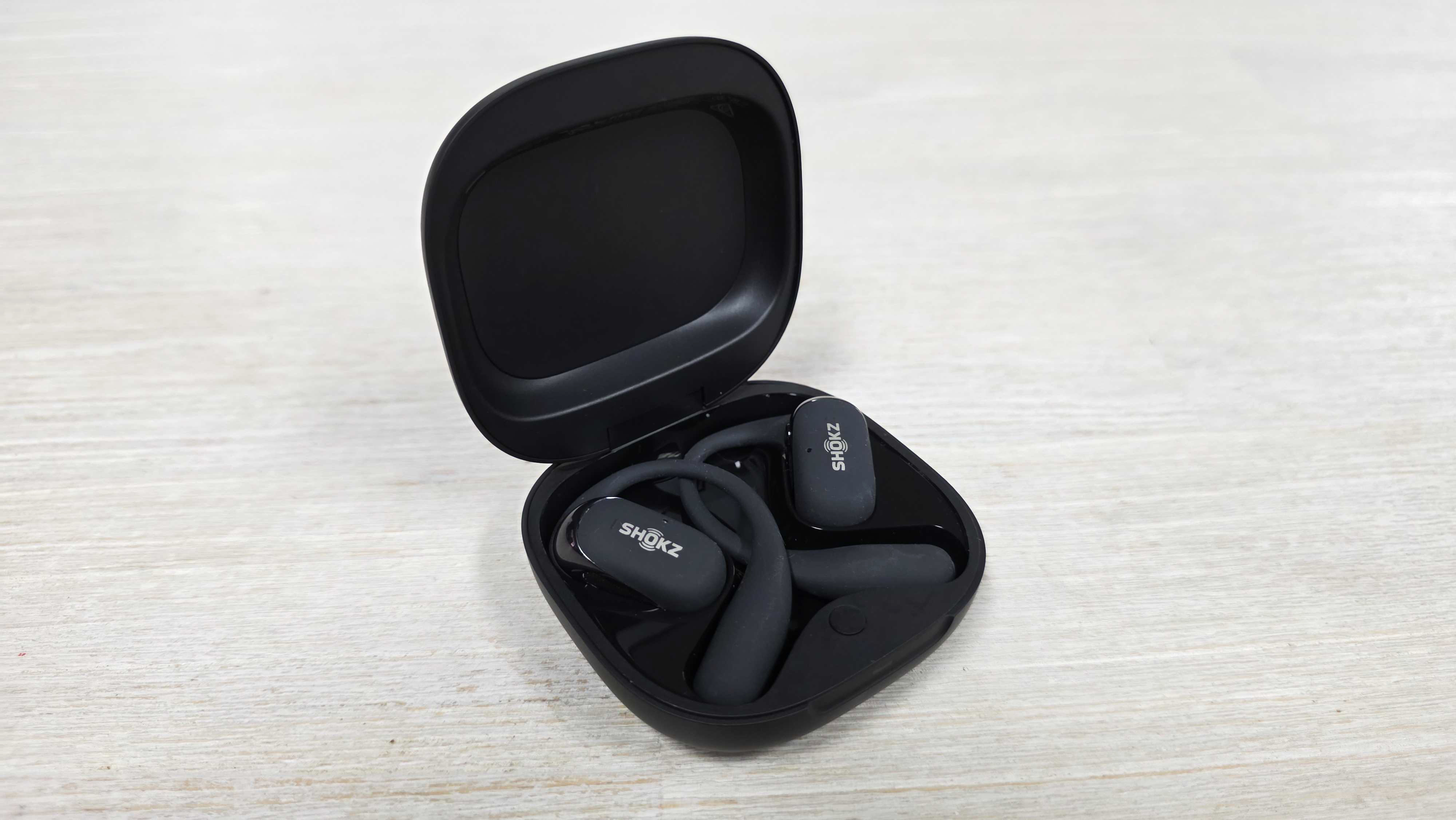
On the flip side, the OpenDots One clipped onto my ears perfectly, with their speakers pointed directly into my ear canal for the optimal listening experience.
Despite their small size, the OpenDots One are able to pack two circular drivers into a single spherical module in order to enhance bass response. The result is clean, punchy audio that performs well in low frequencies. That said, I found the OpenFit 2+ to offer louder, more impactful audio overall.
Another key difference between the two headphones is that the OpenDots One use touch controls, which I found a little difficult to get used to, while the OpenFit 2+ now offers physical buttons — a welcome upgrade over the standard OpenFit 2.
Both the OpenFit 2+ and OpenDots One offer a range of EQ modes accessible in the Shokz app, starting with the 'Standard' listening experience and then providing options for 'Vocal' and 'Bass' boosting modes. There’s also a ‘Private’ listening mode, which optimizes frequencies to reduce sound leakage. Even so, it was still pretty hard to avoid at high volumes, as my co-workers will attest.
For open-ear buds, the OpenOne Dots and OpenFit 2+ deliver surprisingly punchy audio, which is largely due to their Dolby Audio support. Of course, it's important to keep your expectations in check.
When it comes to sound quality, in-ear headphones will always come out on top compared to open-ear buds. That's because in-ear headphones seal off your ear canal, which blocks out outside noise — especially if the buds offer active noise cancellation. Open-ear buds, on the other hand, are designed to let you hear what's going on around you, which means your listening experience will ultimately be affected.
Shokz OpenDots One vs Shokz OpenFit 2+: battery life
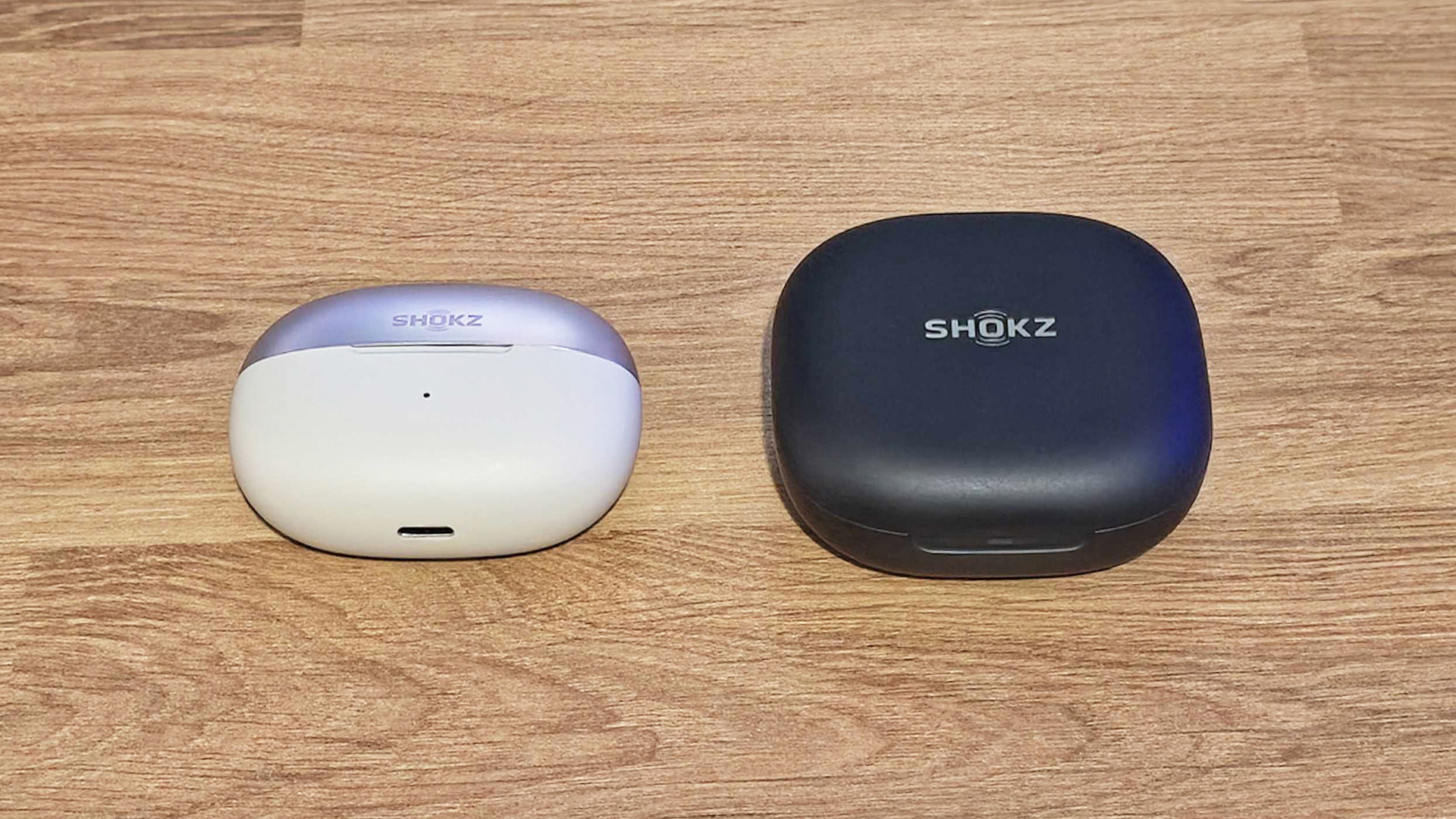
It should come as no surprise that the OpenFit 2+, with their larger size and case, offer a longer battery life compared to the OpenDots One, though both provide impressive battery longevity given their compact designs.
The OpenDots One offers 10 hours of battery life on the buds, while the charging case extends that to around 40 hours in total. Meanwhile, the OpenFit 2+ buds will last around 11 hours, with their case bringing their total listening time to roughly 48 hours.
If, however, you've forgotten to fully charge your buds, a ten minute charge of either the OpenDots One or OpenFit 2+ will get you around 2 hours of listening time in a pinch. Both charging cases can be charged via USB-C cable or by wireless charging.
Shokz OpenDots One vs Shokz OpenFit 2+: verdict
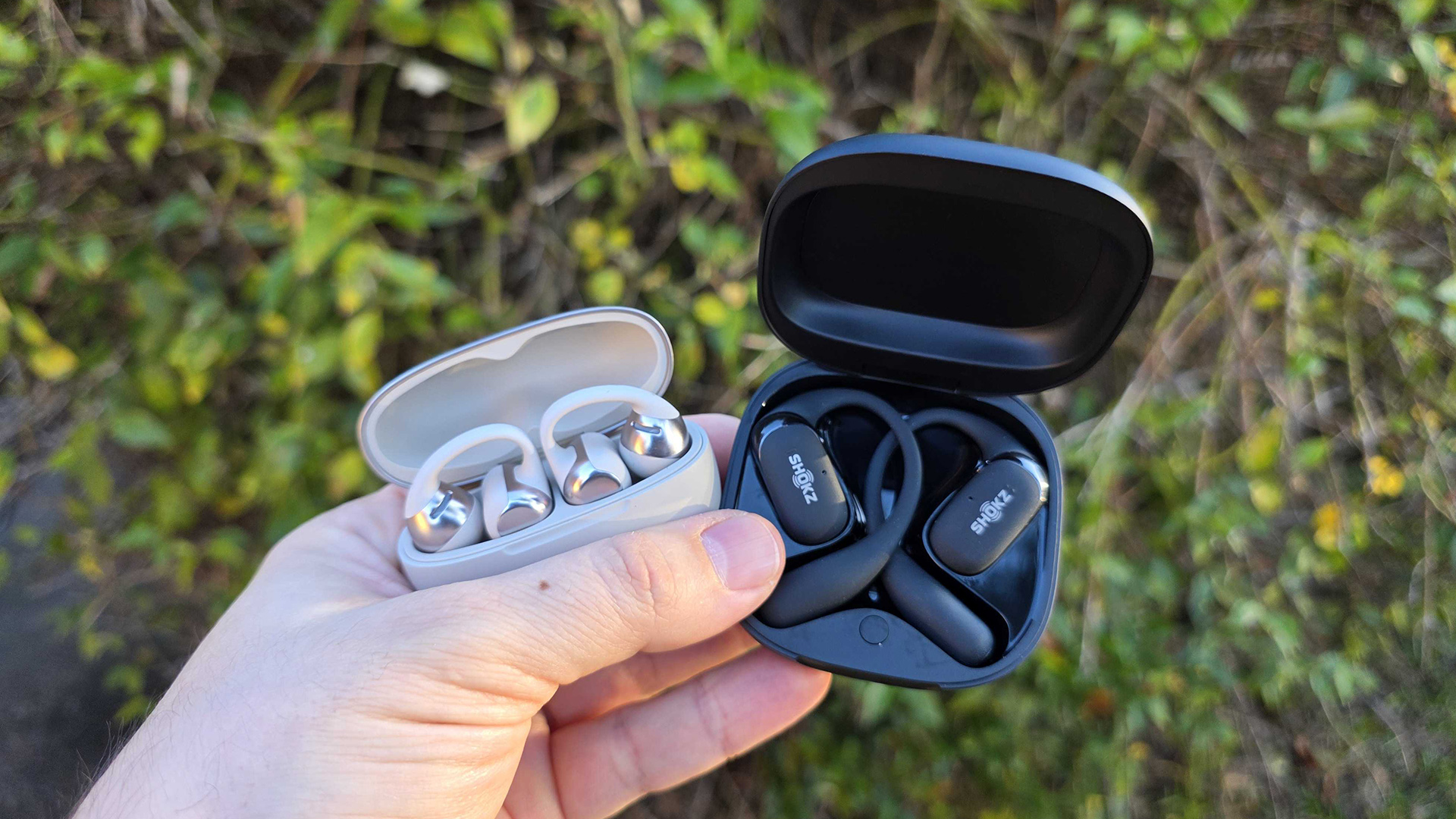
When it comes to pure sound, the OpenFit 2+ definitely blasts out louder audio and has a wider soundstage, which makes the OpenDots One feel slightly less impressive. However, the OpenFit 2+ just didn't sit right in my ears, and that really messed with my listening experience.
The OpenDots One, on the other hand, fit me well and sounded great, even if they aren't quite as bombastic on the audio front.
Personally, I would opt for the OpenDots One, however, I predict the OpenFit 2+ will be the better option for most people — especially if they lead an active lifestyle.
More from Tom's Guide

Stephen Lambrechts is the Managing Editor of Tom's Guide AU and has written professionally across the categories of tech, film, television and gaming for the last 15 years. Before Tom's Guide, he spent several years as a Senior Journalist at TechRadar, had a brief stint as Editor in Chief at Official Xbox Magazine Australia, and has written for such publications as APC, TechLife Australia, T3, FilmInk, AskMen, Daily Telegraph and IGN. He's an expert when it comes to smartphones, TVs, gaming and streaming. In his spare time, he enjoys watching obscure horror movies on physical media, keeping an eye on the latest retro sneaker releases and listening to vinyl. Occasionally, he also indulges in other non-hipster stuff, like hiking.
You must confirm your public display name before commenting
Please logout and then login again, you will then be prompted to enter your display name.
